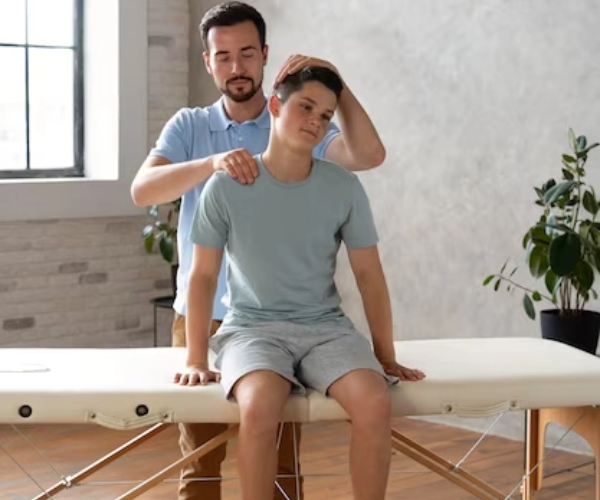Shoulder injuries can be frustrating and life-altering, especially if they interfere with your ability to work, exercise, or enjoy daily activities. Whether you’re dealing with a sudden shoulder dislocation, the nagging pain of a rotator cuff injury, or the stiffness of a frozen shoulder, understanding your condition and the best course of treatment is essential. In North Hollywood, you’ll find expert care tailored to diagnosing, treating, and preventing shoulder injuries, helping you get back to doing what you love.
In this comprehensive guide, we’ll cover common shoulder injuries, their symptoms, causes, treatment options, and tips for recovery, while also addressing frequently asked questions about shoulder health.
Your shoulder is one of the most versatile joints in your body, allowing a wide range of motion. However, its mobility also makes it vulnerable to injuries and wear-and-tear over time. The shoulder is made up of three main bones: the humerus (upper arm bone), scapula (shoulder blade), and clavicle (collarbone). These bones are supported by muscles, tendons, ligaments, and cartilage, which all work together to provide stability and movement.
The rotator cuff consists of four tendons that stabilize your shoulder joint. Injuries to these tendons can occur from overuse, trauma, or degeneration with age.
Symptoms: Shoulder pain , weakness, and difficulty lifting your arm overhead.
This occurs when tendons in the shoulder are pinched during movement, often due to inflammation or bone spurs.
Symptoms: Pain during lifting or reaching, especially overhead.
Frozen shoulder (Adhesive Capsulitis)is characterized by stiffness & reduced range of motion caused by inflammation in the joint capsule, develops gradually & may resolve on its own over time.
Symptoms: Shoulder pain, weakness & difficulty lifting arm overhead.
A dislocation occurs when the upper arm bone pops out of the shoulder socket. This can result from a fall or sports injury.
Symptoms: Intense pain, visible deformity, and difficulty moving the arm.
The labrum is a ring of cartilage that stabilizes the shoulder joint. Tears can occur due to trauma or repetitive overhead activities.
Symptoms:Clicking or popping in the shoulder, instability, and pain.
Bursitis occurs when the small fluid-filled sacs (bursae) that cushion the shoulder joint become inflamed.
Symptoms:Swelling, tenderness, and pain, especially during movement.
Arthritis, particularly osteoarthritis, can wear down the cartilage in the shoulder joint, leading to chronic pain & stiffness.
Symptoms:Gradual onset of pain, reduced range of motion, and stiffness.

Shoulder pain can stem from injuries, repetitive strain, or underlying health conditions. Here are some common causes:
Knowing the signs of a shoulder injury can help you seek treatment promptly:

Fortunately, there are many effective treatments for shoulder injuries, ranging from conservative approaches to surgical options.
Physical therapy is often the first line of treatment for many shoulder conditions. A therapist will guide you through exercises to improve strength, flexibility & range of motion.
Corticosteroid injections can reduce inflammation and provide temporary pain relief, particularly for conditions like bursitis or arthritis.
Targeted exercises, such as gentle stretches or resistance band training, can help strengthen the muscles around the shoulder joint.
Modifying your workspace or posture can relieve strain and prevent further injury.
If nonsurgical methods aren’t effective, surgery may be necessary. Some common options include:
A minimally invasive procedure used to repair labral tears, impingement, or rotator cuff injuries.
Often recommended for advanced arthritis or irreparable rotator cuff tears, this involves replacing the damaged joint with an artificial one.
Used to treat recurrent dislocations or severe instability.
Shoulder injuries aren’t always avoidable, but there are steps you can take to minimize your risk:
Incorporate strengthening exercises for shoulders into your routine, focusing on the rotator cuff and surrounding muscles.
Practice proper posture and avoid slouching, especially during work or prolonged sitting.
Warm up before physical activities and use proper techniques to avoid overuse injuries.
Follow your doctor’s recommendations, including attending all physical therapy sessions.
Avoid overloading your shoulder while it heals, but engage in light movements to prevent stiffness.
Recovery time varies depending on the severity of the injury and the treatment method. Mild injuries may heal within a few weeks, while surgical recovery can take months.
If you’re experiencing persistent shoulder pain or mobility issues, it’s important to consult a specialist. North Hollywood, CA, is home to some of the best orthopedic doctors and shoulder injury specialists, as well as advanced physical therapy clinics. Many offer personalized treatment plans to address your specific needs, from nonsurgical care to post-operative rehabilitation.
Shoulder injuries are often caused by overuse, trauma, or degenerative conditions. Sports, repetitive overhead activities, and poor posture are common contributors.
Signs include pain, reduced range of motion, stiffness, clicking or popping sounds, and weakness in the shoulder.
Rest, ice, and over-the-counter pain relievers can help with mild shoulder pain. Gentle stretches and ergonomic adjustments may also provide relief.
If your pain persists for more than a few weeks, worsens, or limits your ability to perform daily activities, it’s time to see a doctor.
Many shoulder injuries, such as mild rotator cuff tears or impingement, can heal with nonsurgical treatments like physical therapy, rest, and injections. However, severe injuries may require surgery.
Shoulder injuries can disrupt your life, but with the right care and prevention strategies, you can find relief and regain full function. In Los Angeles, our expert orthopedic doctors, physical therapists, and advanced treatment options are available to help you recover quickly and effectively. Whether you’re managing a rotator cuff injury, frozen shoulder, or arthritis, don’t hesitate to seek the guidance of an orthopedic specialist at Urgent Orthopaedic Care.
By understanding the causes, symptoms, and treatment options for shoulder injuries, you’re taking the first step toward better shoulder health. Take action today, and get back to living pain-free!